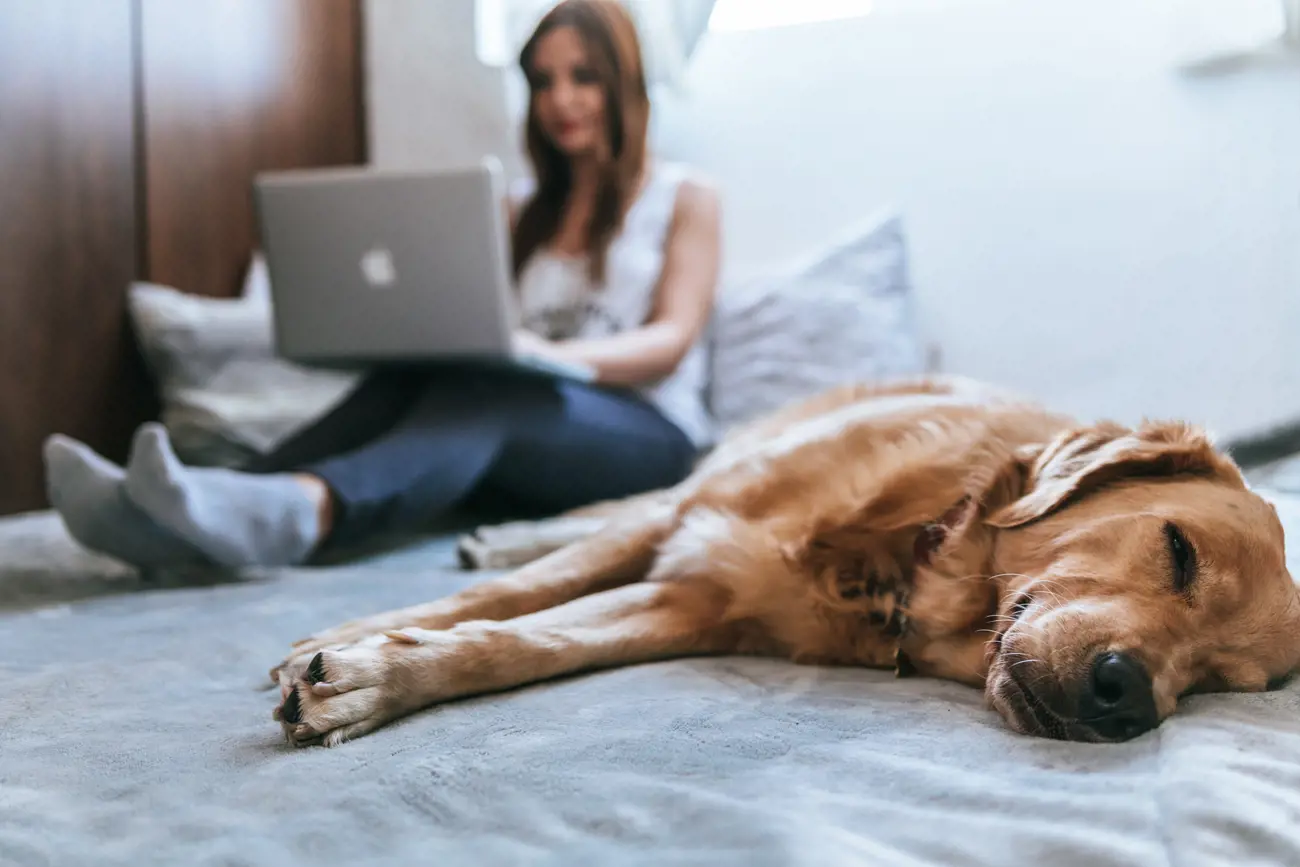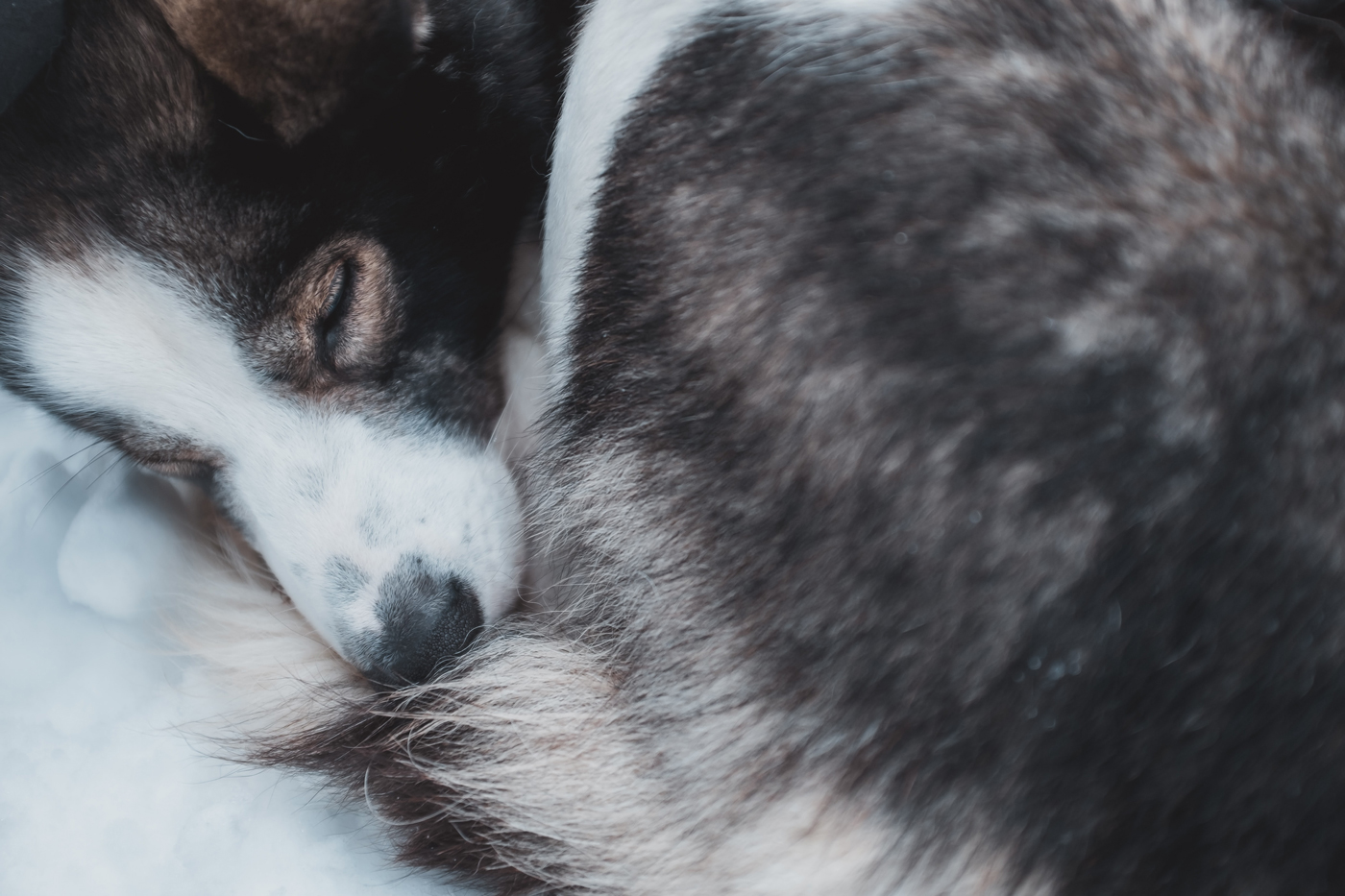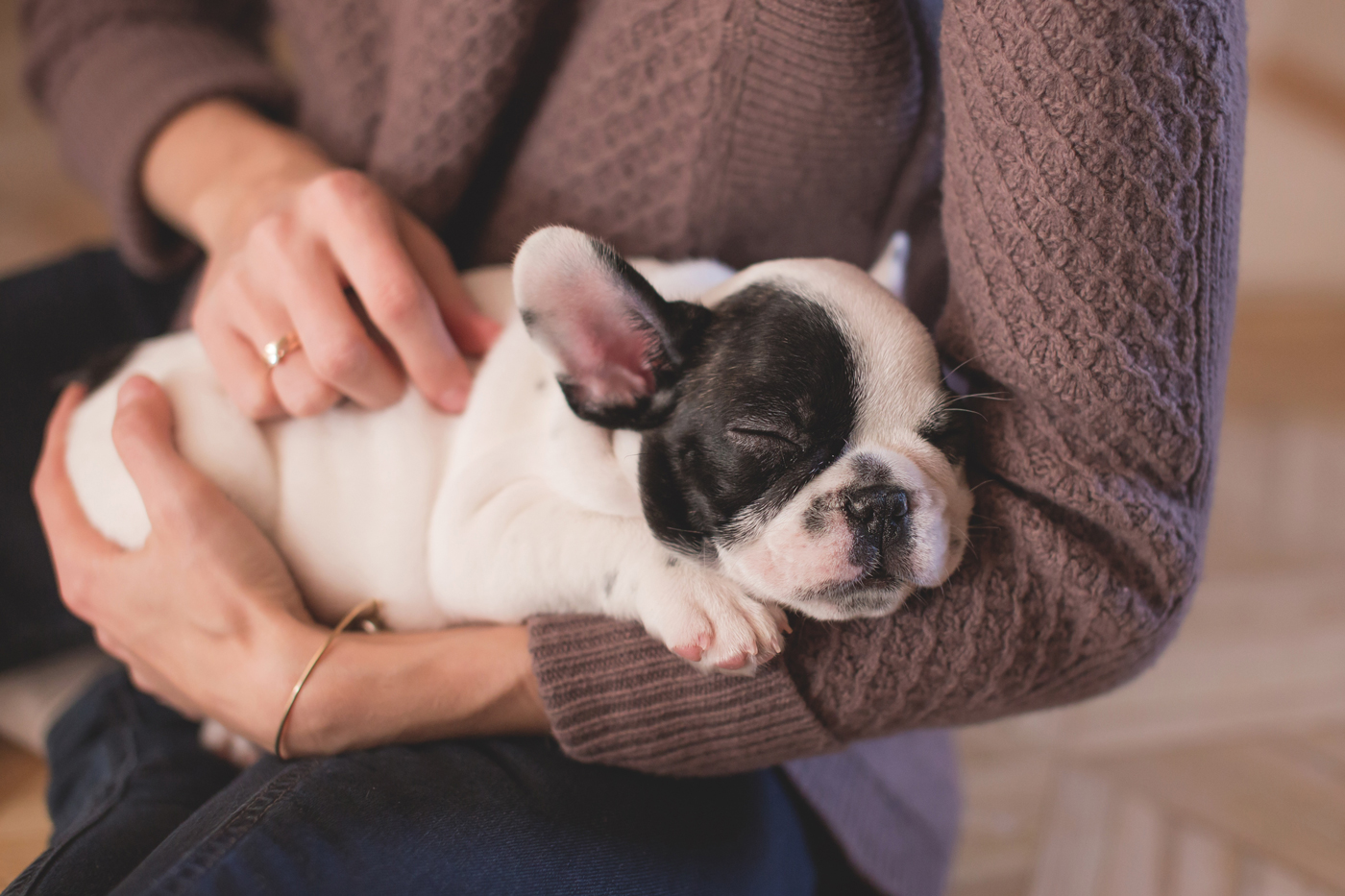What do these dog sleeping positions mean?
18th August, 2020

No matter what age or breed of dog you own, they’re active animals who like nothing more than a spot of exploring, sniffing and playing. But all that activity means that they need to get some well-earned rest, too.
Dogs have many different ways to tell you how they feel. But a good indicator is to watch them while they sleep.
Their sleeping position can be surprisingly illuminating as they get themselves into lots of different poses: stretched out, curled up, on their back or on their front.
But what do all these sleeping positions mean? Let’s take a look at what they reveal about your canine companion.
And remember, if your pup has trouble sleeping or is sleeping much more than usual, get them checked out at the vets. Your dog insurance should help cover any treatment needed.
The Doughnut
Could they look any cuter? Curled up with their head nuzzled into their tail and their paws tucked into their body this position screams ‘super snug’.
But there’s a more practical reason for this curled-up look. It takes your dog back to its wilder forebears as it not only conserves warmth but also protects their softer parts from attack.
While this can indicate they’re feeling a bit uncomfortable where they’re sleeping, it can also mean they’re just fulfilling a cosy need.
Understanding doggy behaviour like this and getting good dog insurance in place is key to being a responsible pet owner.

The Starfish
Lying on their back with legs splayed out and head thrown back haphazardly is not the most dignified of sleeping positions, no matter how pure a pedigree they are.
But this is more than made up for by the fact this position shows they’re confident and relaxed in their surroundings.
It makes it difficult to get to their feet quickly and having their soft underbelly exposed says they feel no threat. It could also suggest they have a relaxed and calm nature. Just don’t try to move them from their favourite chair!
Chosen on a hot summer’s day or in front of a roaring log fire may imply that your pampered pooch is feeling the heat and is trying to cool off.
Their bellies have thinner fur and the paws hold sweat glands so it’s the perfect way to keep cool. Much more sensible than letting someone else have a turn in the prime fireside spot!
The Snuggler
While morning doggy breath may not be the ideal start to your day, it does show your dog trusts you and wants to bond.
This position - snuggling up closely with you – is a hangover from puppy days when they had difficulty regulating their own body temperature.
You might complain but you secretly love that feeling of still being needed. You’re so lucky to have them.

The Side Sleeper
Comfortable, relaxed and trusting, this position is one of the most common you’ll see your furry friend adopting.
Again, the fact that their vital organs are exposed suggests they’ve no worries and are pretty easy-going.
If your dog finds themselves in new surroundings or with new people, they’re unlikely to sleep in this position. It’s all about trust.
The Lion
Looking like something off a plinth in Trafalgar Square, the lion pose (where they’re on their stomach with their head resting on top of their outstretched paws) isn’t really a sleeping position.
With their muscles tensed and bodies in an upright pose they’re probably just dozing rather than in a deep sleep.
Energetic dogs sometimes adopt this position to conserve energy before their next burst of activity – just say the word ‘walkies’ and see what happens!

The Superman
Is it a bird? Is it a plane? No, it’s just another ridiculous sleeping position.
The name of this pose takes its inspiration from the fact the dog’s legs are stretched out in front and behind them as though they’re flying through the air.
Again, the explanation behind this position is a far more grounded one relating to body temperature. The fur on a dog’s underside is thinner than on the rest of its body.
So, in order to lose some heat it presses itself closer to the cooling floor.
Whatever the position your dog adopts it’s important that they’ve access to somewhere quiet and comfortable to snooze without disturbance.
When choosing the right bed for your dog the following points are worth bearing in mind:
-
Make sure you choose the right size bed for your dog – it needs to be large enough for them to lie comfortably in all positions.
-
Dogs have their own preferences as to types of dog beds so give them a few options from which to choose. Round beds with a side might be good for a dog who wants to curl up while mattress beds are better for lying flat.
-
Dog beds need sufficient padding and should be easily washable.
-
If you want to use the bed outside then a waterproof or water-resistant bed could be useful.
-
Place the dog bed somewhere warm and draught-free but also give them more than one option if possible. Perhaps place one in a quiet corner of the house where they can rest undisturbed and one where you spend most time so they can be with you when snoozing.
-
Some dogs have specific needs. For example, if they’re older then they might benefit from a memory foam bed to make it easier to get up.

Dog insurance from Purely Pets
Whatever crazy position your pup chooses to sleep in, the award-winning dog insurance specialists at Purely Pets love all your furry friends.
Just like the variety of sleeping positions, we know that all dogs are different and have unique needs. So we’ve designed 15 levels of lifetime cover to help you choose the perfect insurance for your pooch.
Along with a 24-Hour Vet Helpline and the online policy management portal, benefits can include:
-
Cover for dentistry, loss of pet, third party liability and overseas travel
-
Lifetime cover from £1,000 up to £15,000
-
Low excess from as little as £60
Get a dog insurance quote today!
Helpful Pages
Recent Posts
Pet Insurance Quote
- 98% claims paid *
- Claims paid directly to vets
- 24/7 vet video consultations
- Interest free monthly payments




